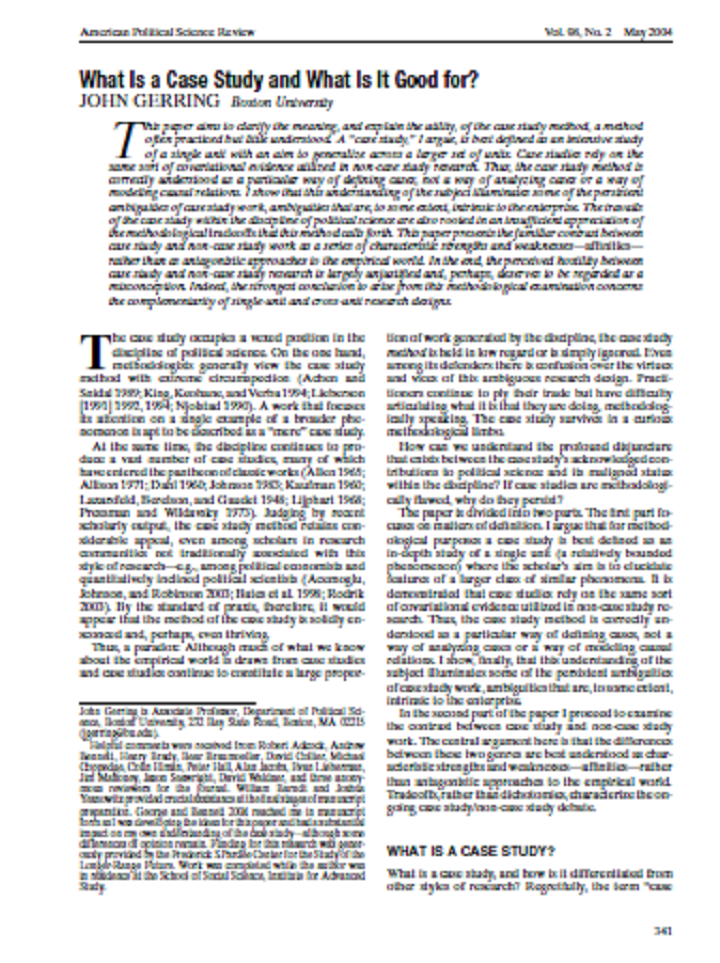What Is a Case Study and What Is It Good for? Gerring, J. (2004)
This paper aims to clarify the meaning, and explain the utility, of the case study method, a method often practiced but little understood. A “case study,” I argue, is best defined as an intensive study of a single unit with an aim to generalize across a larger set of units. Case studies rely on the same sort of covariational evidence utilized in non-case study research. Thus, the case study method is correctly understood as a particular way of defining cases, not a way of analyzing cases or a way of modeling causal relations. I showthat this understanding of the subject illuminates some of the persistent ambiguities of case study work, ambiguities that are, to some extent, intrinsic to the enterprise. The travails of the case study within the discipline of political science are also rooted in an insufficient appreciation of the methodological tradeoffs that this method calls forth. This paper presents the familiar contrast between case study and non-case study work as a series of characteristic strengths and weaknesses—affinities— rather than as antagonistic approaches to the empirical world. In the end, the perceived hostility between case study and non-case study research is largely unjustified and, perhaps, deserves to be regarded as a misconception. Indeed, the strongest conclusion to arise from this methodological examination concerns the complementarity of single-unit and cross-unit research designs.
Bibliographic information
Gerring, J. (2004). What Is a Case Study and What Is It Good for? American Political Science Review
Filter / Tags
Guidelines and manualsEnglish

